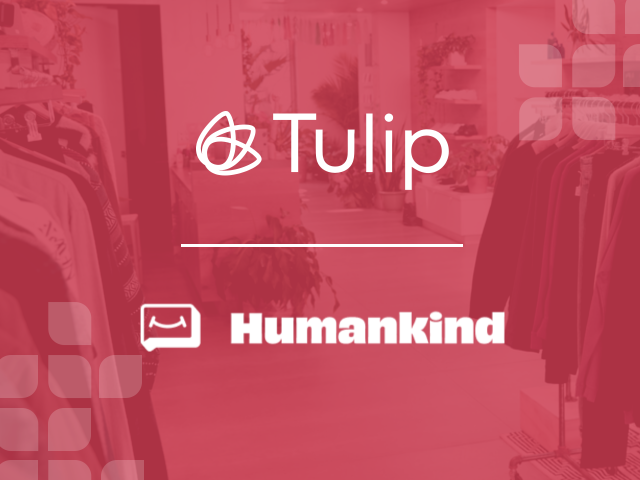When deciding between developing an in-house retail solution, or buying a ready-made product, one of the first questions retailers often ask themselves is “Do we have an existing tool we can use to solve this problem or can we build one ourselves?” The question of ‘build versus buy’ is a long-standing question that heavily impacts almost every industry. Every business needs to assess their resources and review their unique requirements to determine the best course of action for themselves.
When retailers face this question, they are in a unique position as they often already have resources in-house who theoretically could build the solution they need. This is when the question changes from ‘Can we build it ourselves?’ to ‘Is building it ourselves the best use of our budget and resources?”
Starting out with key points is helpful to determine what option and what solution is the best fit for your company and brand. Identifying your business goals, determining how complex the solution needs to be to fit your business size and needs, and evaluating your in-house priorities and capabilities are all important steps in the process.
Consider these five key areas as you identify and determine the best solution for your business.
Speed and time constraints
First, decide if the business need is immediate and how quickly you need to go to market. The timeframe for launch can be a determining factor in how to make the solution readily available. Building in-house solutions can take longer to build, launch and support requirements. They can also go past the original timelines and extend the launch date. When considering building an in-house solution, factor in these considerations, assess if now is the time to build and if you can afford to wait and evaluate.
When buying a ready-made solution, the set up and implementation times are shorter, you’ll have a faster reaction time, and a guaranteed timeline. Outsourcing can quickly create a seamless experience to onboard, integrate, launch and implement without waiting to build the application. If having a solution is critical to your operations then buying a solution can help you solve a business problem quickly.
Resources
When deciding whether to build or buy a solution, you will need to assess the priority items for your internal resources in order to achieve business objectives. Creating an in-house solution requires a dedicated IT team. Businesses need to determine if they have the short-term talent required to create the solution, but also need to assess if they have the resources to maintain and enhance solutions long-term as both technologies and requirements evolve. This is especially important if you need your solution to integrate with other products. If those products are outsourced, your team will need to maintain and update to ensure the integration continues to work. Talent will have to be pulled from other projects permanently or you may have to hire and train additional hands. You’ll also have to determine if your resources can manage integrations with partner product updates as they happen.
By outsourcing your solutions, you can not only keep your dedicated talent focused on their current projects, but also keep them available for future internal initiatives. Third-party solution providers offer dedicated resources to solve potential issues, without taking away from your internal team. Third-party solution providers also eliminate the need for increasing headcount and associated overhead expenses as businesses can rely on the extended talent pool provided through their offerings.
Expertise
Solution providers are experts in their field and provide resources that focus on the latest technologies, provide continuous updates, find and fix bugs and provide technical support on specific solutions. The development lifecycle requires knowledge across vast areas such as architecture design, project management, and API development. Most teams also have dedicated customer success representatives to help clients get the most out of their solutions and provide customized plans to fit the client’s needs.
Third-party solution providers bring additional knowledge that your internal team may not have. When you choose a solution provider, you are not only getting the benefit of their direct knowledge and skills, but you are also getting a product that has been vetted and improved by other retailers’ needs and requests. When you choose a third-party solution, you are not only getting their expertise and capabilities, but also the expertise of all their customers.
Monetary and opportunity costs
Building in-house solutions can be pricey and the pricing is rarely predictable, oftentimes leading to projects going over budget. Most costs go towards the initial development of your solution and towards long-term maintenance and updates. When projects go over budget, it impacts project operations of in-house solutions. According to McKinsey, on average, large IT projects run 45% over budget and 7% over time when delivering 56% less value than predicted.
Using third-party solution providers, you reduce risk of over spending as you know exactly what your costs are upfront. With transparency and predictability, third parties can almost always provide a lower upfront cost and a lower recurring cost. Businesses can also keep their current resources and do not have to add extra staffing towards a new project.
Customization and control
Building in-house gives you full control over the customized development and features. You have the power to design your solution specifically to your needs and build it around your existing in-house systems. If there isn’t a solution out there, developing a solution that does not exist can add a competitive advantage.
Third-party solution providers can provide scalability and enable extending the out-of-box functionality to meet your company’s unique requirements. It also provides value-added solutions from third-party partnerships such as guaranteeing the technology is current and compliant in areas such as tax, PCI, and customer data protection (CCPA and GDPR). Businesses can also benefit from enhancements requested by other clients to improve their solutions, otherwise not possible when building in-house.
Whether you choose to build in-house or outsource your solutions, ensure you have the long-term resources and that the systems you use are scalable and flexible to adapt to your growing needs. If choosing a third-party solution provider is your best choice, ensure that they not only help you with your current requirements, but that they will be there to help consult and provide solutions that will help your business grow in the long run.
To learn more about how Tulip’s solutions help retailers meet their business objectives, request a demo with us today.

